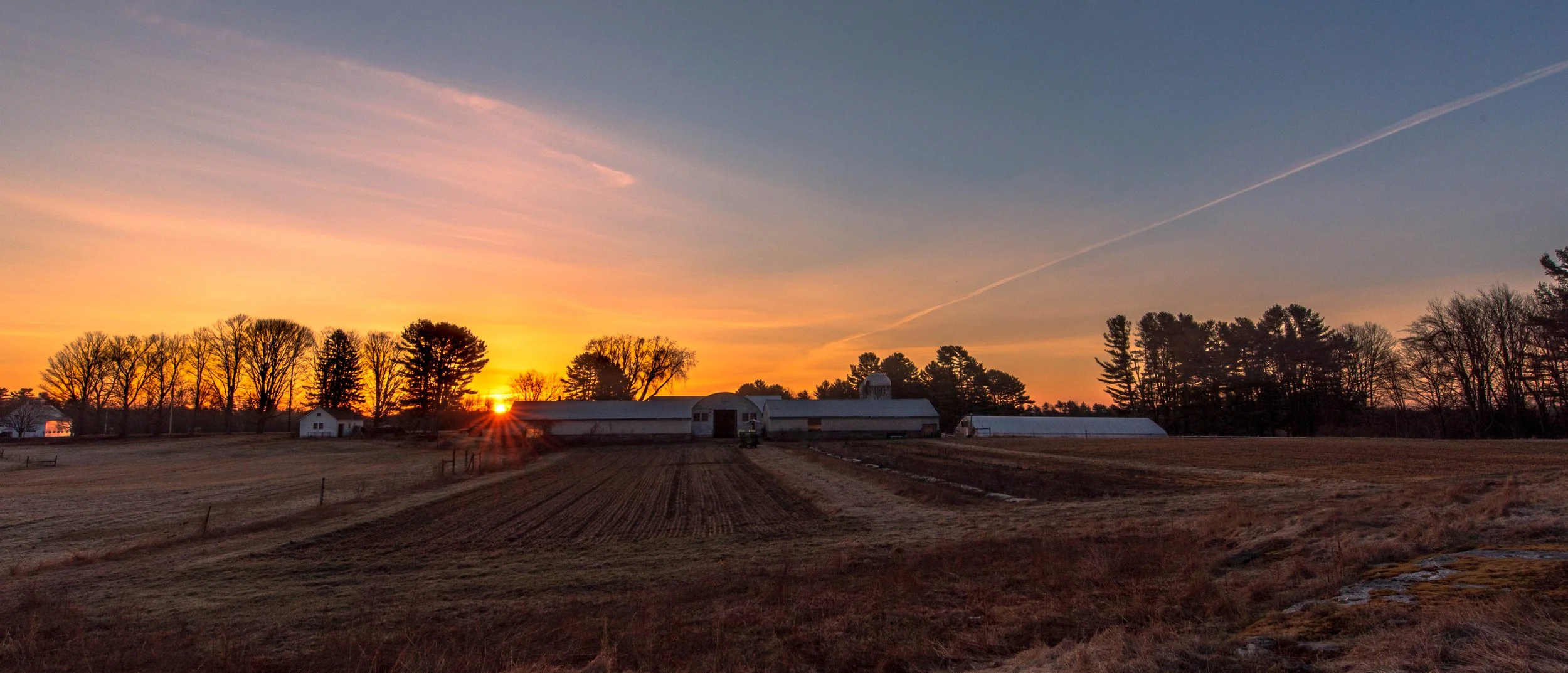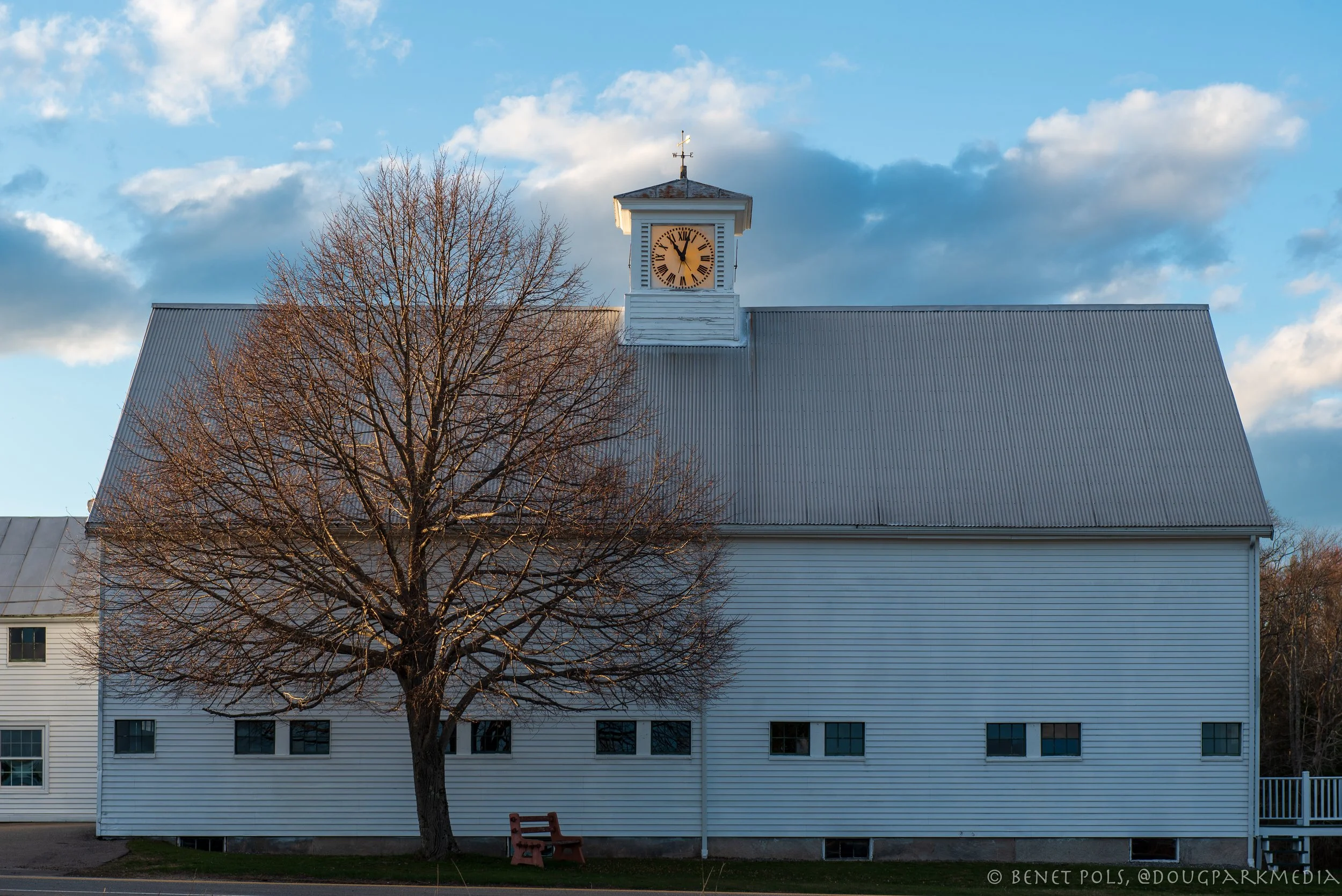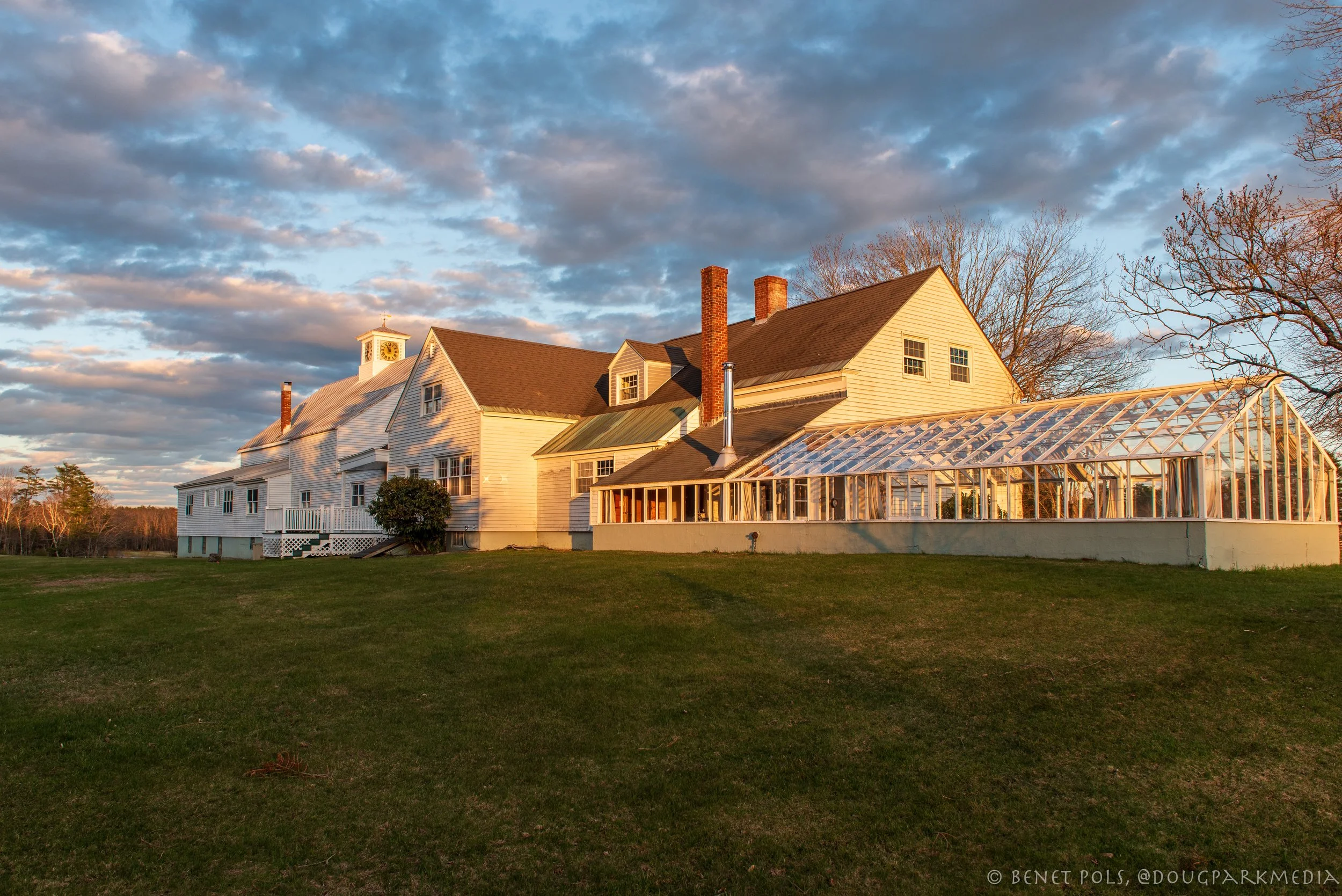There’s a mobile home in town that —at dawn—is an object of beauty. For one thing it’s the yellow of an old Maine manse, a nearby stick built garage is painted the same yellow. For another it sits behind a healthy line of trees, near squarely perpendicular to the rays of the rising sun. The trees mark the edge of a big farm that—so far as I know—is the only outfit in town still raising livestock in substantial numbers. There is a lot to see: the cattle in their morning perambulations radiating steam, the farmhouse itself is something of an artifact. A good part of the year I pass just after dawn. If I am lucky the gleam of the sun raises dew from the ground and casts lengthy shadows after the cows before stopping hard against the yellow wall. The shadows of its boundary trees run along the ground, up its walls and then rise over the slight pitch of its roof giving it a tiger like pattern. The yellows punctuate the woods and call back to the sun while the shadows hold on for another half hour of rest.
My ride to and from work is a meditative act. I’ve been traveling the backroads from my town to the next town for nearly a decade now and have yet to regret the extra four minutes of contentment each trip bestows upon me. For a good chunk of the year I travel west with the rising sun following me, for another portion, when days are shorter and my workplace buzzes, I work into the night and so am treated to the retreating sun thickening the world in purples.
Among the small beauties like this mobile home are larger iconic beauties marked with a sense of history and by public minded kindness.
Two things happened in Brunswick in 1961. They tore down the old town hall and its majestic clocktower, and I was born. The townspeople have been full of regret ever since.
Town Hall is gone but the clock chimes on, hosted for some sixty years on the roof of what is still called Dionne Farm. The clock has been there all my living memory first brought to my attention by a bewoolened teacher at the head of a Longfellow School class field trip. There to see cows and learn about silos we learned about Dr. Dionne and the rescued clock. At six or seven, town hall was ancient history, for the teacher the memory was likely fresh.
From three quarters of a mile, the barn is a white speck on a prominence just visible between two long stretches of woods siding the road. First thing the sun shows is the northerly stretch of woods at the end of an active farm field, the trunks are pink with morning light that oozes down from their tips like syrup before reaching the field. Passing through the woods a little dip gives way to a hill with the barn and clock hard on the right side of the road. The white of the barn and the white of the clock face are two different things; the stone of the clock face, perhaps marble, is rougher and its reflections subtler, calming, with a broader array of color. Topping the rise the sun hits the rear view mirror straight on requiring the brights dimmer even though, at this hour, no cars follow. Through the next intersection the rear view mirror catches a line of trees on the drive at Crystal Spring Farm. The barn and the trees are silhouettes, now black, back-lit by the fully risen sun.
I have stared at this view scores of times and made early morning pilgrimages on days when I did not need to be on the road just to take it in fully without the bother of traveling someplace.
It is a peculiar phenomenon: the sense of a perpetual public or personal entitlement in something as intangible as a view, vested in me by the mere passage of time. With no more personal effort these many years other than having enjoyed the fruits of Dr. Dionne’s family’s time and care of the old clock, its host, and the surrounding gardens and landscape I, for some reason, am attached to it as if it were mine.
Of course it is not just a clock. The property, and neighborhood as a whole, are a testament to the past, in many ways an emblematic gateway way to town and a salute to the agrarian past much the way the two mill buildings astride the Androscoggin, now sporting restaurants, antique stores, and offices, stand for the industrial past.
My meditative moments turned to angst late last summer after reading of the passing of Dr. Dionne’s son-in-law and learning of his family’s plan to sell the property. Angst blossomed to full scale anxiety when the realtors’ signs signifying multiple lots were for sale went up.
A realtor friend kept me up on what he knew, what he thought of the prices: reasonable for the stand alone lots, too much for the house and connected property which would require further subdivision to justify the investment. Offers on the two lots came quickly and the signs came down. Word was there was a price drop on the bigger property but the sign stayed up. No Christmas lights dazzled from the big hardwoods fronting the road as they had in year’s past.
My route home from work is more varied as I have the luxury of more than just four spare minutes along with the need for some additional reflection. I may wander down Flying Point with Maquoit Bay on the right to Bunganuc Road. Bunganuc offers three choices: to cross back at Highland, or Casco, or Woodside,
There are plenty of barns along the way. There is a beautiful double doored barn in Freeport that, when both ends are open, offers views straight through the barn and down to the mouth of Maquoit Bay. It’s hard to look through it without seeing Fern and Avery on a rope swing. Granite Farm’s barn with its giant domed roof and silvery wind vents atop it is legendary, and there is a quietness around John McKee’s barn.
All three roads put me back on Pleasant Hill Road with Dionne Farm and Crystal Spring Farm to frame the last little stretch before I am back in amongst the neighborhoods of town.
All of this may explain the palpable sense of relief and joy I felt when I learned last Friday that a sense of history and public minded kindness is still at work and that the Brunswick-Topsham Land Trust has the opportunity to retain this jewel.




